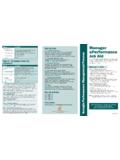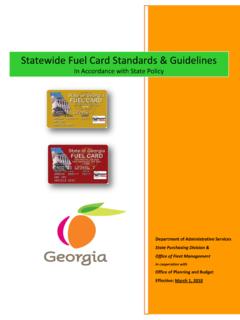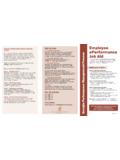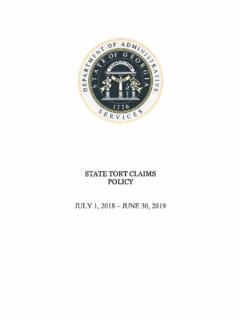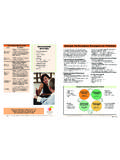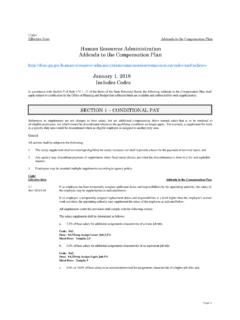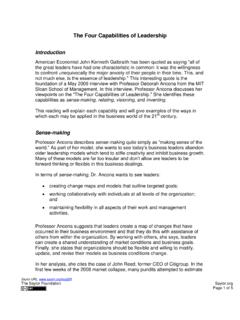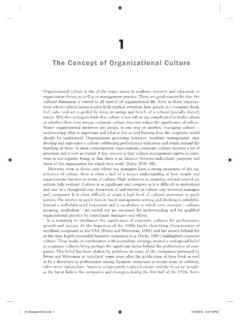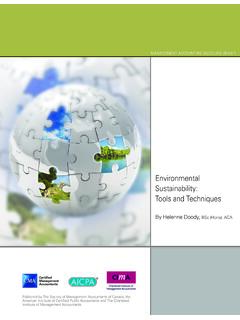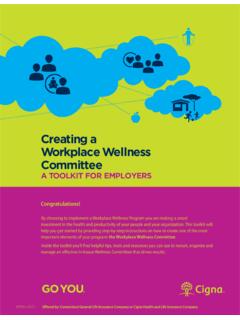Transcription of Competency-Based Development Guide
1 1 Revised 1/2012 Competency-Based Development Guide Creating a World-Class Workforce Georgia State Government 2 Revised 1/2012 Table of Contents How to Use This Guide .. 3 Overview of Development Planning .. 4 Individual Development Plan (IDP) Sample Worksheet .. 7 External Training .. 9 Development Activities & Resources Statewide Core Competencies Customer Service .. 10 Teamwork & Cooperation .. 12 Results Orientation .. 14 Accountability .. 16 Judgment & Decision Making .. 18 Leadership Competencies Talent Management .. 21 Transformers of Government .. 25 Other State Competencies Communication .. 29 Conflict Management .. 34 Creativity & Innovation .. 36 Cultural Awareness .. 38 Flexibility .. 40 Initiative .. 42 Negotiation & Influence.
2 44 Professional Development .. 46 Project Management .. 49 Teaching Others .. 51 Team Leadership .. 53 Individual Development Plan (IDP) Blank Worksheet .. 55 3 Revised 1/2012 How to Use This Guide This Development Guide has been designed specifically to engage state employees in learning activities geared towards achieving established goals and improving performance of state competencies. The Development Guide contains suggested activities that will help employees and managers develop any of the 18 competencies contained in the state s competency framework. The activities in this Guide can be used for a variety of reasons. Typically, they are used to develop competencies that are needed in the current job by establishing an Individual Development Plan (IDP) aimed at addressing the competencies that have been targeted for the employee.
3 However, the activities may also be used to develop competencies that are needed in a future job, or to build upon competencies that are required to fulfill an organizational need. The Guide can be used as a tool by both employees and managers for professional Development . Although the Guide contains suggestions for on and off-the-job activities, it should not be viewed as a complete listing of every possible activity that can develop skills in a particular area. The activities can be modified to suit learning needs, and they may also serve to stimulate ideas about additional activities. The Guide also contains a listing of books employees could consider to aid in the Development process. Click here to return to the Table of Contents Statewide Core and Leadership Competencies Core Competencies Leadership Competencies Customer Service Teamwork and Cooperation Results Orientation Accountability Judgment and Decision Making Talent Management Transformers of Government Additional Behavioral Competencies Communication Conflict Management Creativity and Innovation Cultural Awareness Flexibility Initiative Negotiation and Influence Professional Development Project Management Teaching Others Team Leadership 4 Revised 1/2012 An Overview of Development Planning Development planning typically involves creating an Individual Development Plan (IDP).
4 An IDP is a uniquely tailored action plan that contains developmental activities aimed at enhancing proficiency in specific competencies to meet established goals. The manager and the employee have a joint responsibility for developing and implementing the IDP. The role of the manager is to ensure that the employee has the support and the resources needed for successful Development . Below is a 6-step Development process. Six-Step Development Process 1 2 3 4 5 Gather Feedback Select Areas of Focus Select Activities Develop the Plan Implement the Plan 6 Assess Progress 5 Revised 1/2012 Step 1: Gather Feedback Before creating a Development plan, you need to gather feedback to determine what you are doing well and where you might need to focus Development .
5 You can conduct an assessment of your current competency levels to determine where opportunities for growth may exist through a self-assessment or an assessment conducted with the participation of managers, peers, customers, or any combination of these people. The results of customer surveys, as well as direct feedback from your manager, customers and/or peers can also provide valuable information about specific strengths and Development needs. Step 2: Select Areas of Focus Once you have identified the various opportunities for Development , you need to identify the one or two competencies where Development will provide the most benefit. It is important to remember that not all competency issues can be effectively addressed through training and Development . Factors such as the lack of motivation, resources, or opportunity to demonstrate a competency can impact a person s assessment rating or feedback in a particular area.
6 Step 3: Select Activities Selecting the right activities to include in the IDP is essential for successful Development . Developmental activities may include on-the-job training, classroom training, or self-managed learning, such as, reading, e-learning, and off-the-job activities. A variety of Development activities should be included. When selecting developmental activities, the manager and employee should consider the availability of resources in the organization. Some activities such as attending a training session or joining a professional organization may involve both time and money. Whereas, on-the-job activities such as delivering a presentation or facilitating a focus group session may involve fewer resources and be just as effective. Learning styles should also be considered when selecting activities.
7 Some people learn best by observing, some learn by doing, others learn by listening, reading, or by engaging in a combination of these learning styles. Choose the approach that works best for you. 6 Revised 1/2012 Step 4: Develop the Plan IDP s are typically developed once a year. Most managers include discussions of the IDP as part of the annual performance evaluation process, although it does not have to be done at that time. The IDP should include the specific areas to be developed, desired outcomes, developmental activities, and realistic timeframes for completing the activities. The IDP should include the learning goals or specific performance outcomes to be achieved. The goals should be written in measurable terms, and the employee and manager should have a clear idea about what successful achievement of goals looks like.
8 It is also very important to identify how progress towards achieving the goals will be measured. Keep in mind that the IDP should be viewed as a living document and reviewed periodically to ensure that the activities continue to support established goals. Step 5: Implement the Plan To ensure that Development takes place, the employee and manager should establish a system for tracking and measuring progress towards the goals created. This includes identifying how to measure progress, who will measure progress, and how often progress should be measured. When evaluating progress, it is helpful to seek feedback from others about any changes in performance. This will determine if modifications to the Development process are needed. Step 6: Assess Progress After the employee and manager have completed the IDP and the employee has engaged in several developmental activities, the employee and manager should assess progress toward the Development goal.
9 Based on the results of this assessment, the IDP may need to be adjusted accordingly. Keys to Successful Development Ask for feedback. Make the most of individual strengths. Set reasonable goals. Identify a learning partner. Be willing to take risks. Keep the plan visible and current. Ensure continued and specific Development activities take place. Click here to return to the Table of Contents 7 Revised 1/2012 Individual Development Plan Worksheet (Sample) Name Jane Doe Title Date 7/15/20XX Development is a partnership between the agency, the employee, and the manager. One of the key steps of Development is to establish a Development plan. There are three components to consider when creating this plan: Development in current role Expand skill set and knowledge areas Prepare for future roles Considering the three components, complete the sections below.
10 After the Development plan is completed, meet with your manager to review the plan. Strengths Strengths can be based on your current job performance or your career aspirations. 1. Customer Service Strong focus on meeting the needs of internal customers 2. Teamwork and Cooperation Open to input from others and considers others opinions before moving forward 3. Results Orientation Very focused on achieving agreed upon results 4. 5. Development Needs Development needs can be based on your current job performance or your career aspirations. 1. Presentation Skills 2. Influence Skills 3. I am moving into a more cross functional role where I won t have authority over others. I need to be able to influence others to see my perspective and accept my recommendations for moving forward.
